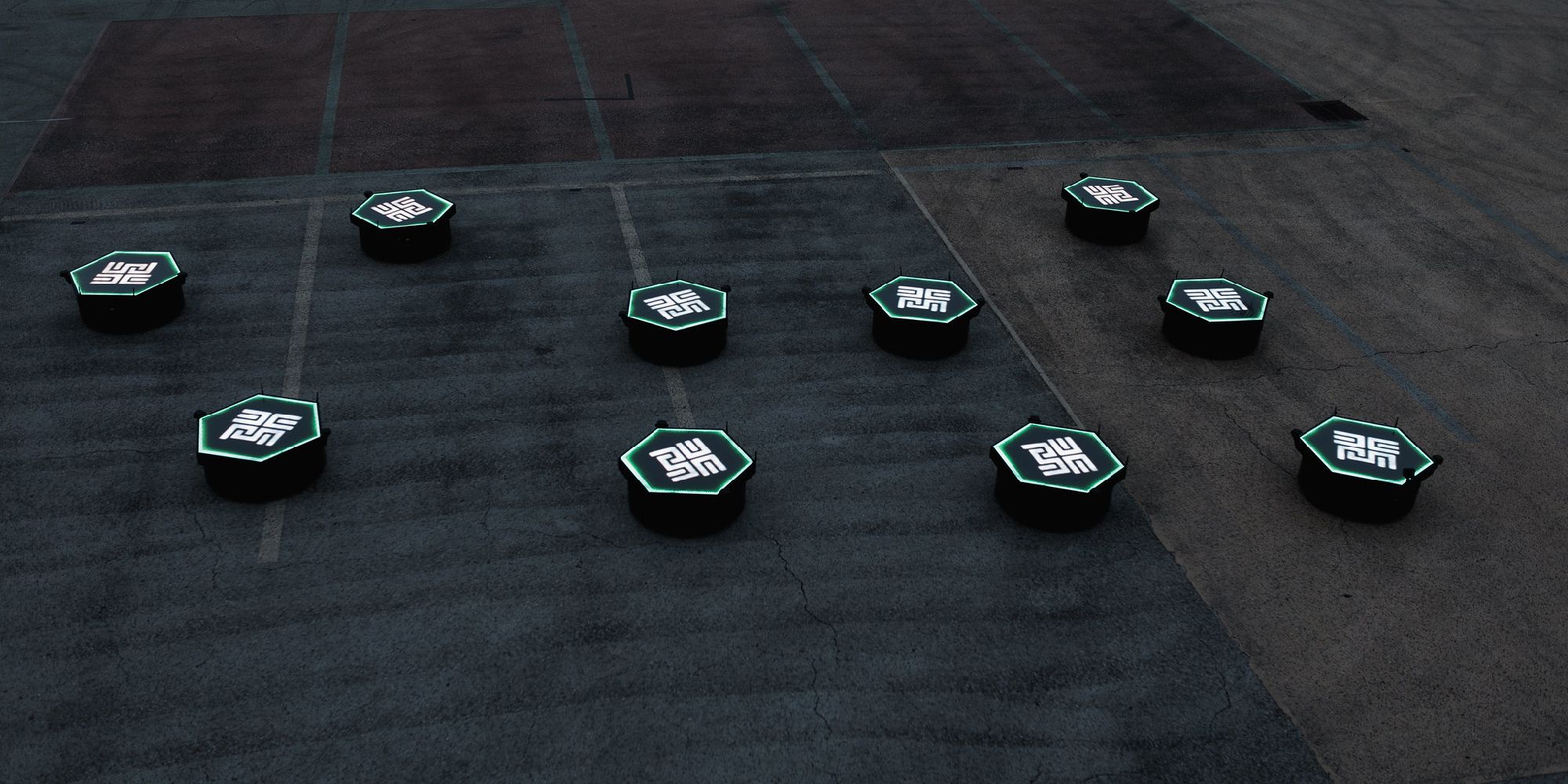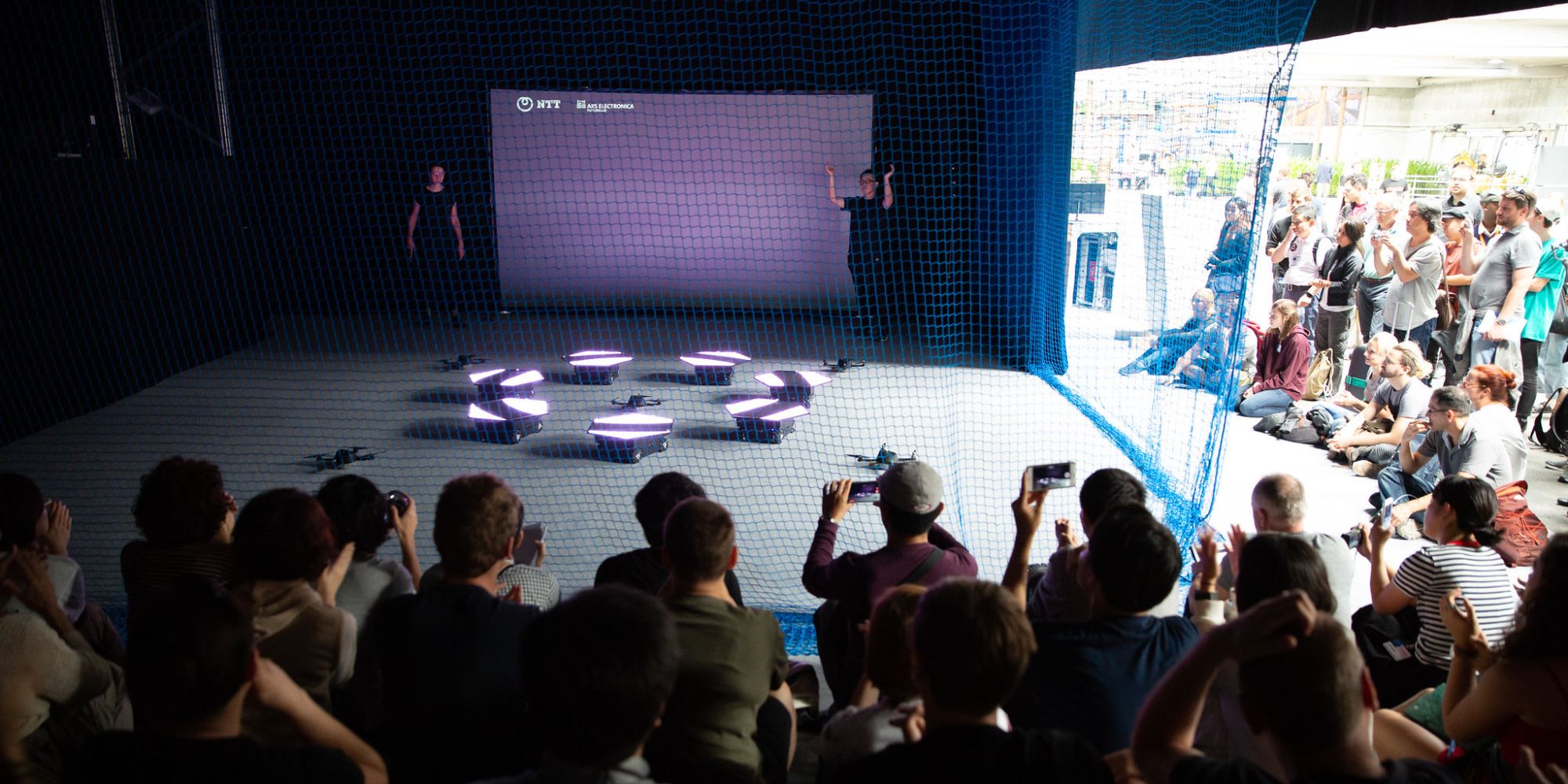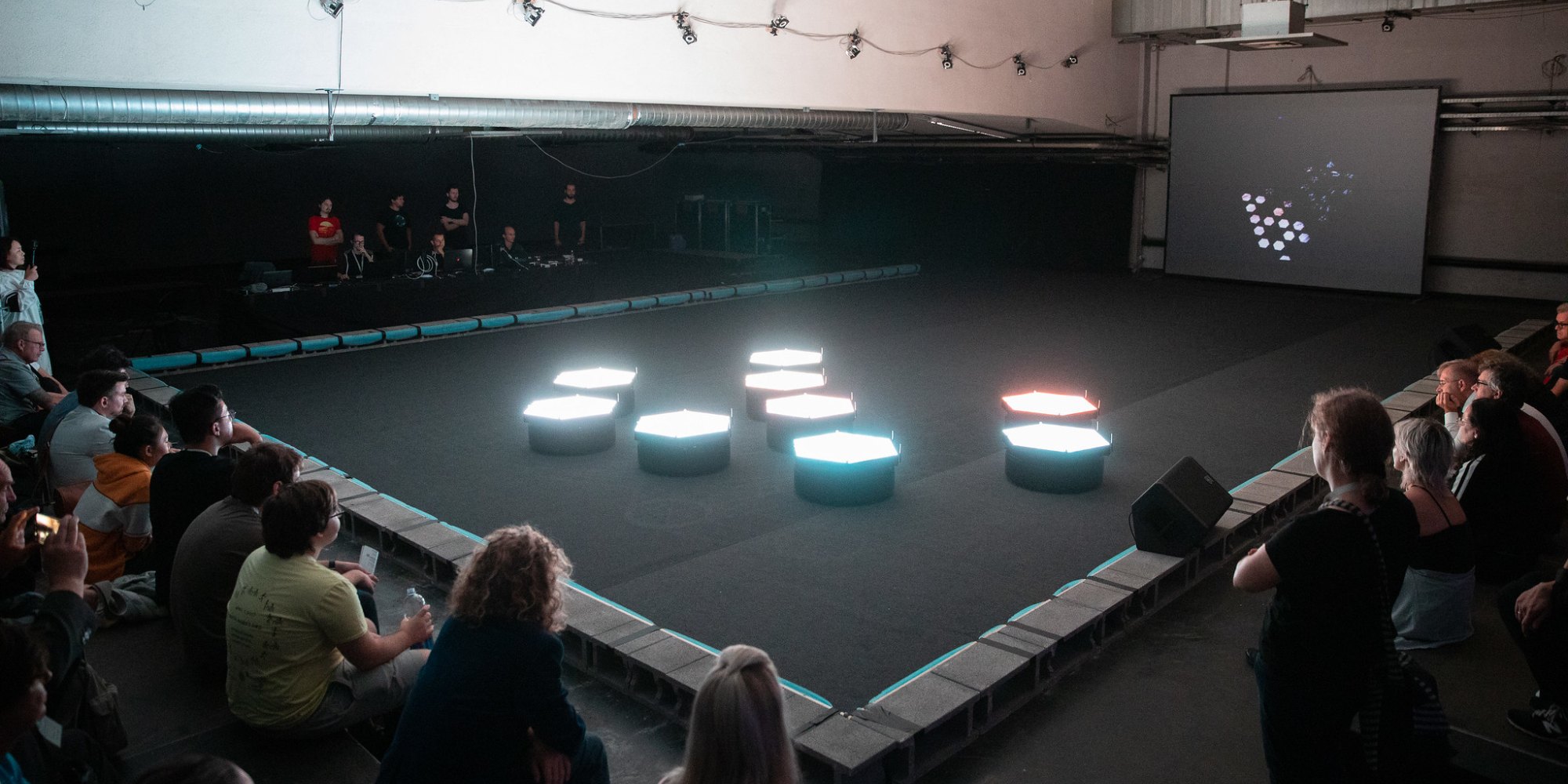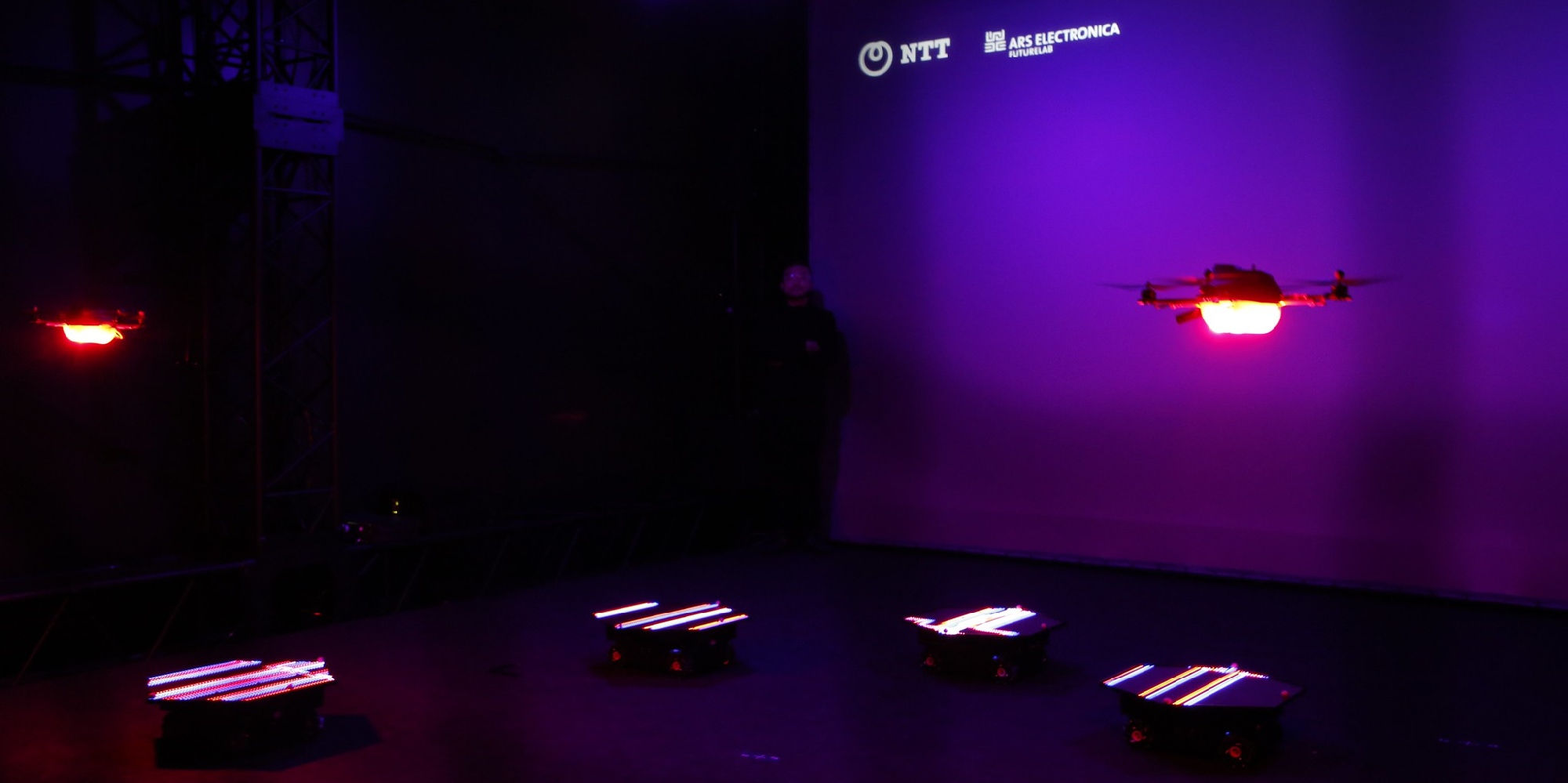swarmOS is a powerful operating system to control large-scale swarms of UAVs (flying drones) as well as UGVs (drones that drive on the ground), invented and constantly expanded by the Ars Electronica Futurelab.
It is based on the pioneering work on drone swarms by the Futurelab team: In 2012 we premiered the world’s first outdoor drone light show Spaxels at the Klangwolke in Linz, Austria. In the following years, the Spaxels development and performance teams laid the groundwork for a whole new industry: Drone performances.
Beyond that, our team continually developed the technology further: as a way for robot collectives to interact with humans naturally and to imbue swarms with adaptability, flexibility, scalability, resilience and, finally, intelligence. This is why, in 2017, we built swarmOS.
Ever-evolving operating system
swarmOS consists of two core parts: Ground Control, a powerful application that allows the operators to always stay in control of the swarm, and an Implant, a small device attached to each drone or robot in the swarm to connect it to Ground Control. Using standardized protocols and hardware interfaces, swarmOS acts as a mediator between complex, fast-evolving vehicles and a swarm logic that needs to stay consistent and offer a reliable basis for designing scenarios, from drone light shows to many other use-cases. The system has evolved from the Spaxels technology stack and has been used in later Futurelab projects such as Stream of Hope using ground robots for artistic performances and Space Ink for using drones to create light paintings or applying acrylics to a canvas.
Futurelab researchers continue to work on new features for swarmOS. In 2018, Ground Control and swarmOS were released as version 2. Now, off-the-shelf-drones and bots with specific protocols are compatible with swarmOS. As an alternative, the Futurelab’s own protocol is available to be implemented on vehicle firmware. Ground Control offers not only the use of live drones, but also simulations and a combination of both – an essential feature for new scenarios and choreographies. Its modular UI includes different 3D overview and control options as well as a compact representation of each drone with highlighted information, with the option to include even more details and configuration options.
In 2022, a modular communication architecture was introduced that frees the swarm from a location-bound, interference-prone radio system and allows it to rely on mobile data connectivity in different configurations. It provides a basis for our own new swarm projects, and an enticing option for organizations looking to utilize swarms in ways that go beyond a clear-cut drone light shows.
Chances and challenges
Drones may be the most eye-catching example, but many more robot collectives are imaginable: Swarms of ground vehicles that can drive for hours on a single battery charge, exploring large areas, guiding humans or transporting items; groups of walking robots navigating difficult terrain; or even fleets of autonomous boats and submarines.
Many challenges are shared by all such scenarios: Balancing autonomy of the swarm with guaranteed control for human operators; allowing users to specify and design the behaviour of swarms, be they homogenous or a mix of different types of vehicles; maintaining reliable communication in unpredictable physical environments. swarmOS aims to address all these challenges.
Read more about swarmOS on the swarms+art website dedicated to the continuous evolution of the Ars Electronica Futurelab’s work in this area.
Credits
Ars Electronica Futurelab: Horst Hörtner, Peter Holzkorn, Simon Schmid, Daniel Rammer, Manuel Dobusch, Samuel Eckl, Patrick Berger, Raphael Schaumburg-Lippe, Otto Naderer, Hideaki Ogawa, Stephan Feichter



